All About Takeout Containers and the Microwave!
Miye Bromberg, senior editor for America’s Test Kitchen (ATK) reviews, did some extensive research and testing on takeout containers. She specifically wanted to know which ones could be safely used in the microwave.

Have you ever ordered takeout and by the time you pick it up and get it home, it’s gone cold? Then did you do a zippy-quick warm-up in the microwave? Who hasn’t?
So to Miye’s question, “Is that a good idea?” Her research may surprise you. Here’s her rundown of all the different takeout container materials and how safe they are to microwave.
PLASTIC DELI CONTAINERS. Verdict: NO. Miye says that heating any plastic container can increase the rate at which toxic chemicals leach out of the plastic and into your food. These chemicals have been linked to higher risk of reproductive, endocrine, and neurological disorders, among other issues.
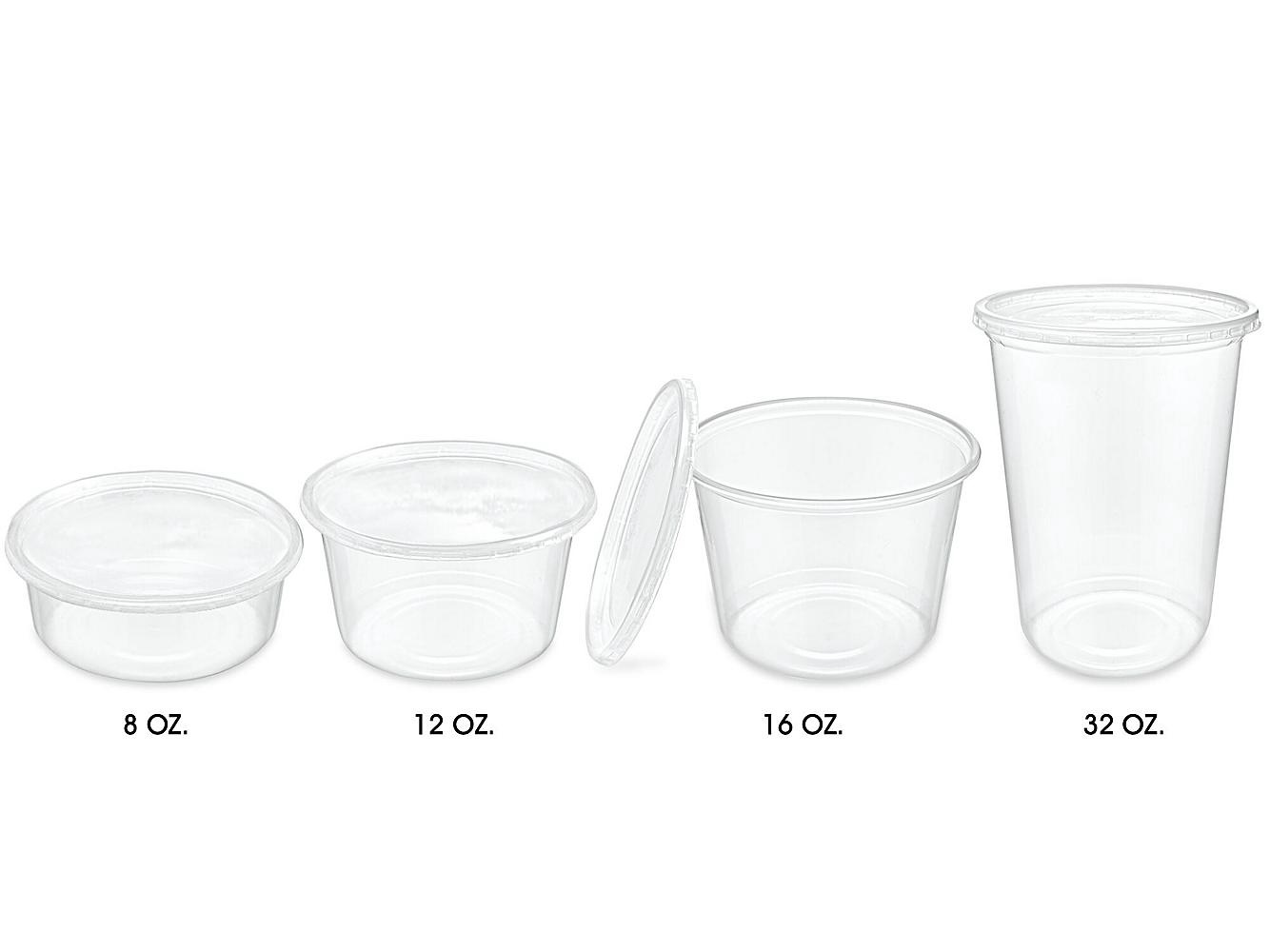
STYROFOAM CUPS, BOWLS, OR CLAMSHELLS. Verdict: NO. Styrofoam will melt in the microwave. In addition, studies show that styrene, one of styrofoam’s components, is “reasonably anticipated to be a carcinogen” (it raises the risk of certain types of cancers).
FOIL WRAPPERS OR BOWLS. Verdict: NO. (Big “DUH,” here, right?) Foil containers cause “arcing,” sending electrical sparks flying inside your microwave and potentially causing fires or otherwise damaging your microwave. But even if foil containers didn’t arc in a microwave, they contain things that when heated, leach into food.
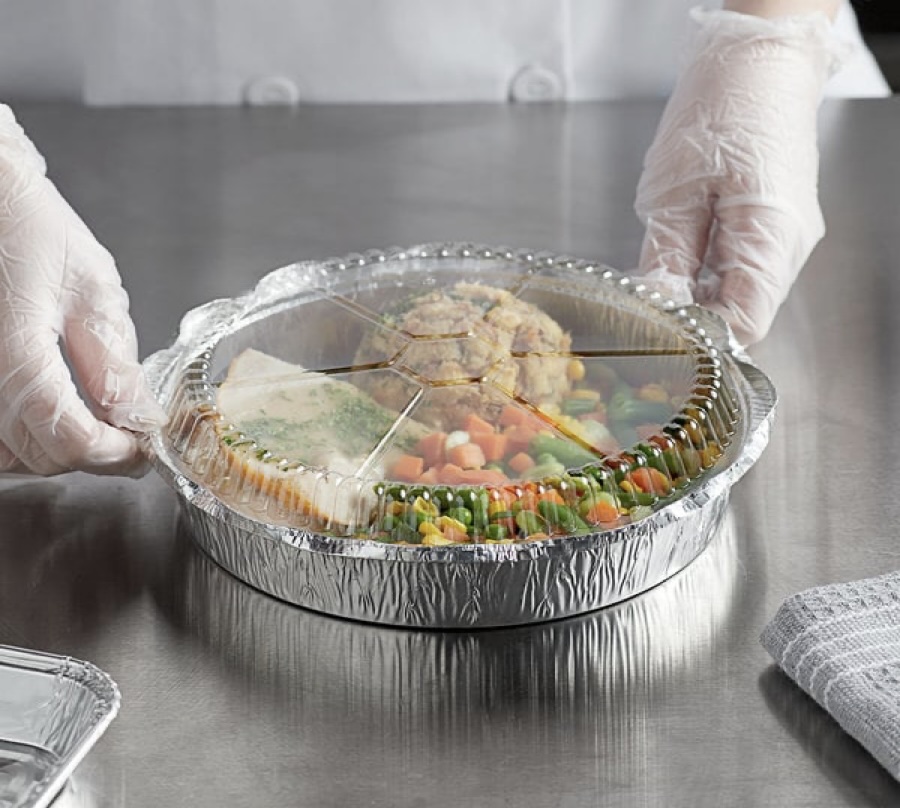
CHINESE TAKEOUT CONTAINERS. Verdict: NO. The most obvious reason is because metal fasteners can create sparks, damaging your microwave. But health-wise, the cardboard is often coated in plastic or other waterproof coatings that leach chemicals into your food when heated.
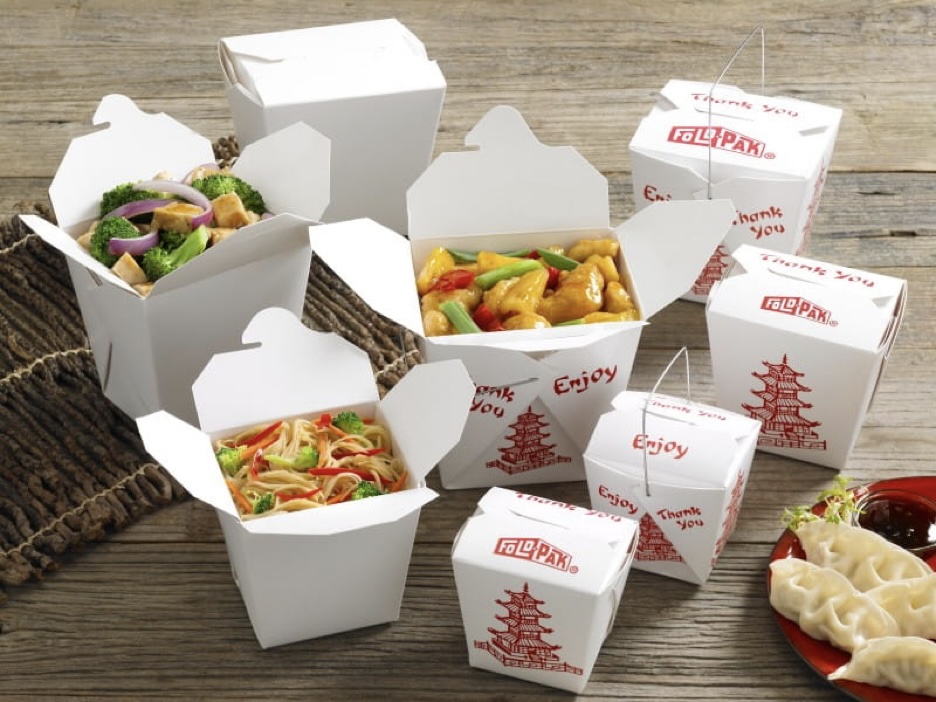
COMPOSTABLE CONTAINERS. Verdict: NO. Most compostable containers are either made from bioplastics or from fiber-based materials that are coated or impregnated with plastics as a way to waterproof them. In both cases, there’s a strong risk of chemicals and plastics migrating into your food when the material is heated.
Miye’s bottom line? Even if a takeout container SAYS it’s microwave-safe, seriously consider avoid heating it. She quotes scientists from the Food Packaging Forum (a non-profit research organization that tests and monitors what’s going on with food and its packaging).
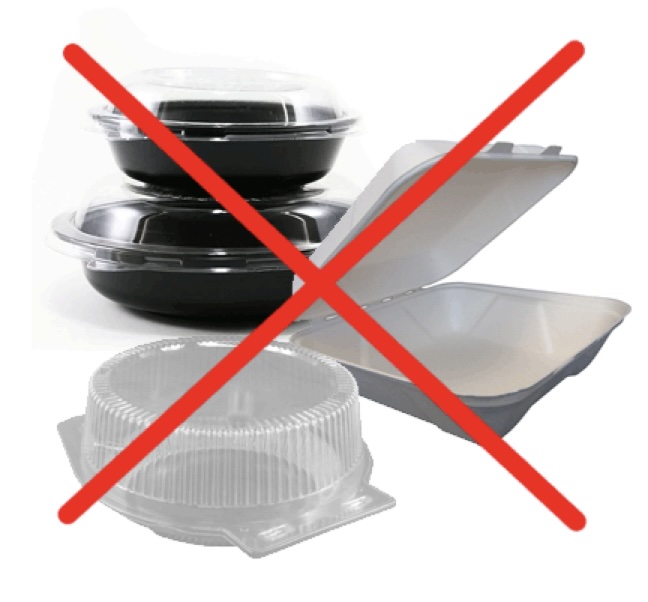
These researchers say, “Material manufacturers themselves often do not disclose or know the exact chemical composition of the final materials they put on the market, meaning every product can be chemically different and migrate different chemicals at different rates.” Not a standard for safety.
Studies show the migration of these chemicals is almost guaranteed when microwaving food in typical takeout containers (“non-inert materials”). And other studies by Consumer Reports corroborated the bad news: bisphenols and phthalates, two groups of chemicals known to increase the risk of several health problems, were found in 79% and nearly 100% (respectively) of the packaged foods they tested, regardless of packaging type.
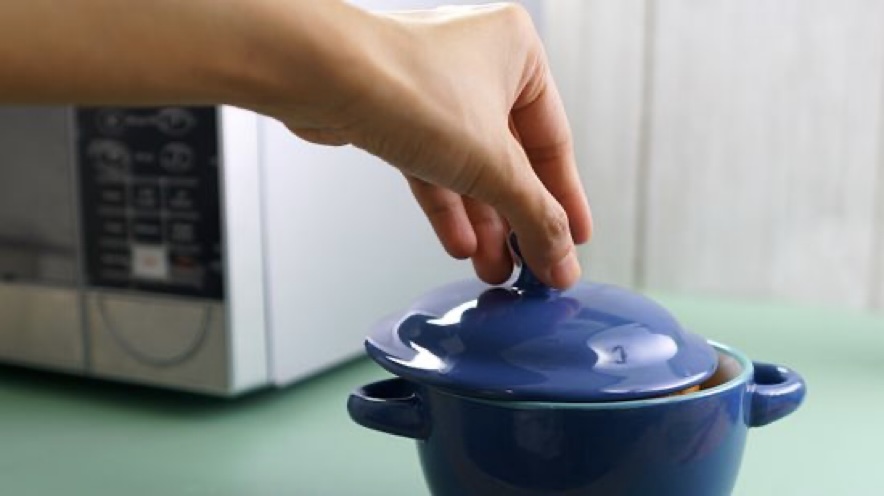
Ultimately, Miye says they DO NOT recommend microwaving ANY takeout container. The best practice is to take food out of its packaging and heat it on a microwave-safe plate, bowl, or cup made of glass or ceramic.
blog comments powered by Disqus

Have you ever ordered takeout and by the time you pick it up and get it home, it’s gone cold? Then did you do a zippy-quick warm-up in the microwave? Who hasn’t?
So to Miye’s question, “Is that a good idea?” Her research may surprise you. Here’s her rundown of all the different takeout container materials and how safe they are to microwave.
PLASTIC DELI CONTAINERS. Verdict: NO. Miye says that heating any plastic container can increase the rate at which toxic chemicals leach out of the plastic and into your food. These chemicals have been linked to higher risk of reproductive, endocrine, and neurological disorders, among other issues.

STYROFOAM CUPS, BOWLS, OR CLAMSHELLS. Verdict: NO. Styrofoam will melt in the microwave. In addition, studies show that styrene, one of styrofoam’s components, is “reasonably anticipated to be a carcinogen” (it raises the risk of certain types of cancers).
FOIL WRAPPERS OR BOWLS. Verdict: NO. (Big “DUH,” here, right?) Foil containers cause “arcing,” sending electrical sparks flying inside your microwave and potentially causing fires or otherwise damaging your microwave. But even if foil containers didn’t arc in a microwave, they contain things that when heated, leach into food.

CHINESE TAKEOUT CONTAINERS. Verdict: NO. The most obvious reason is because metal fasteners can create sparks, damaging your microwave. But health-wise, the cardboard is often coated in plastic or other waterproof coatings that leach chemicals into your food when heated.

COMPOSTABLE CONTAINERS. Verdict: NO. Most compostable containers are either made from bioplastics or from fiber-based materials that are coated or impregnated with plastics as a way to waterproof them. In both cases, there’s a strong risk of chemicals and plastics migrating into your food when the material is heated.
Miye’s bottom line? Even if a takeout container SAYS it’s microwave-safe, seriously consider avoid heating it. She quotes scientists from the Food Packaging Forum (a non-profit research organization that tests and monitors what’s going on with food and its packaging).

These researchers say, “Material manufacturers themselves often do not disclose or know the exact chemical composition of the final materials they put on the market, meaning every product can be chemically different and migrate different chemicals at different rates.” Not a standard for safety.
Studies show the migration of these chemicals is almost guaranteed when microwaving food in typical takeout containers (“non-inert materials”). And other studies by Consumer Reports corroborated the bad news: bisphenols and phthalates, two groups of chemicals known to increase the risk of several health problems, were found in 79% and nearly 100% (respectively) of the packaged foods they tested, regardless of packaging type.

Ultimately, Miye says they DO NOT recommend microwaving ANY takeout container. The best practice is to take food out of its packaging and heat it on a microwave-safe plate, bowl, or cup made of glass or ceramic.
 Alice Osborne
Alice Osborne
DVO Newsletter Contributor since 2006
Email the author! alice@dvo.com
Sources:
- www.endeavor.moffitt.org
- www.uline.com
- www.westrock.com
- www.webstaurantstore.com
- www.mslk.com
- www.wikihow.com
